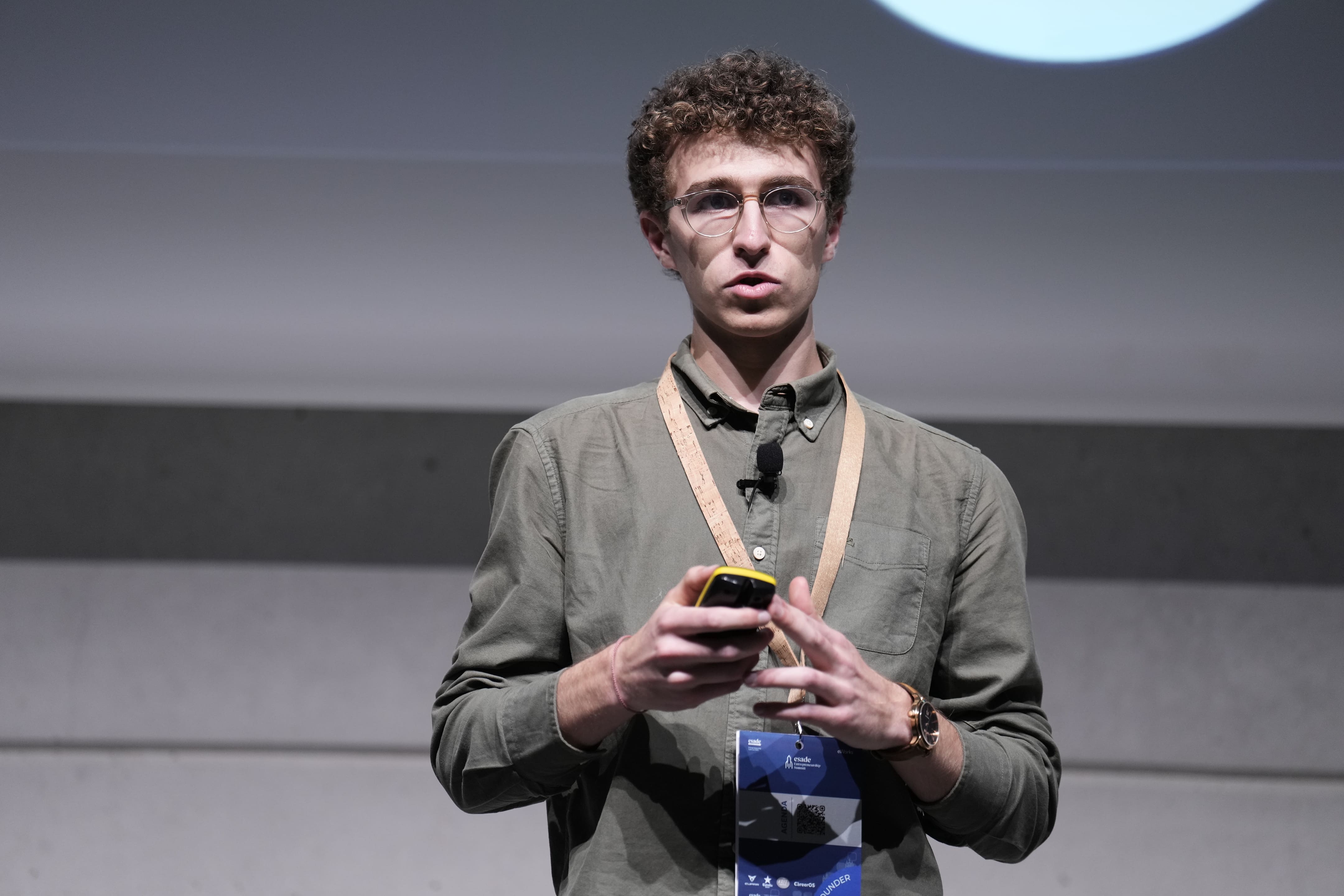What it does
Haptika is a non-invasive wearable that enables touch perception in upper-limb amputees by providing real-time sensory feedback, enhancing grip precision, motor control and functional performance in both daily activities and clinical rehabilitation settings.
Your inspiration
Everything started when we met Joan, an electrician who lost both an upper and a lower limb after a 25,000-volt accident. Seeing his determination to keep moving, playing sports, and living fully changed how we saw engineering not as a tool for complexity, but as a way to help people. We spent a long time trying to develop high-tech myoelectric prostheses until we realized that the real challenge wasn’t just movement, but sensation. That’s when Haptika was born: not to replace prostheses, but to make them feel real, to bring back sensation for Joan and for the more than 9 million people worldwide living with upper-limb amputations.
How it works
Haptika consists of two main components: a sensorized glove and a haptic armband. The glove includes pressure sensors on the thumb, index, and middle fingers, designed to detect grip and contact. It fits easily onto hand-shaped prostheses without requiring modifications. The glove sends this data wirelessly to the armband, avoiding cables and improving usability. The armband has five vibration motors distributed along an elastic strap worn on the residual limb. When the glove detects pressure, it triggers vibrations on the armband, the stronger the grip, the stronger the vibration. This feedback helps users understand how much force to apply. The armband also features buttons to adjust vibration intensity and sensibility, a USB-C rechargeable battery, and a Velcro strap for easy one-handed use.
Design process
We began by gaining a deep understanding of clinical needs, collaborating closely with orthotic clinics and rehabilitation specialists to identify the most pressing challenges users face. To ensure broad compatibility, we studied the most commonly used prostheses worldwide. Based on these insights, we defined key product requirements using Quality Function Deployment (QFD), prioritizing modularity, comfort, and safety. With a clear direction established, we entered a creative exploration phase, brainstorming potential designs and functionalities. These ideas were then refined and consolidated through decision matrices and structured creative processes, always considering user needs alongside the feasibility of materials and manufacturing methods. From there, we moved into iterative development. We created and tested CAD models, experimented with materials, and collaborated with textile manufacturers to design a flexible, breathable arm strap capable of comfortably housing electronic components. The result is a final product that balances user-friendliness, adaptability, and manufacturability.
How it is different
Haptika’s core value lies in its ability to simulate a sensation of touch to upper-limb prosthesis users by allowing them not only to feel what they are touching but also to perceive the amount of force they need to apply. This intuitive feedback, essential for precise and daily tasks, is not available in any current commercial prosthesis. In addition, Haptika stands out for its universal compatibility with commercial prostheses and a modular design that adapts without the need for custom parts. Its ergonomics are tailored for users with reduced mobility, featuring a one-handed strap system and simple, intuitive controls. The lightweight textile-electronic integration is breathable, safe, and comfortable, while its aesthetic design avoids the look of medical equipment, making it feel like a natural wearable rather than a prosthetic add-on.
Future plans
Haptika is growing as a mission-driven startup focused on making sensory tech accessible for prosthesis users. In the coming months, we’ll deepen ties with clinics, rehab specialists, and orthopaedic centres to validate the product in real-life settings and explore clinical integration. We’re also developing new applications, such as neurorehabilitation for stroke or multiple sclerosis, while scaling industrially through partnerships in smart textiles and wearable electronics. In parallel, we’re defining our IP strategy. Our goal is not just to build a product, but to help set a new standard of care in prosthetic and sensory recovery.
Awards
Haptika has taken part in acceleration programs like EIT Health and PRIMER entrepeneurship program (Catalonia), where it was awarded Best Entrepreneurial Project. It also won the Santander X Award for social impact startups. We showcased Haptika at 4 Years From Now (4YFN) within ACCIÓ’s innovation stand.



Connect